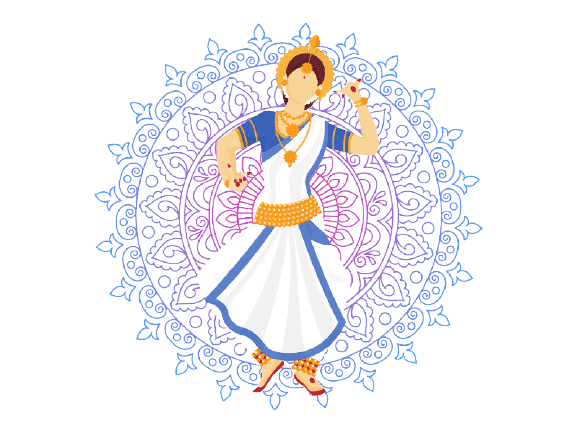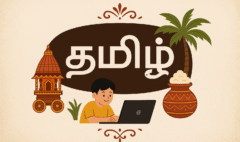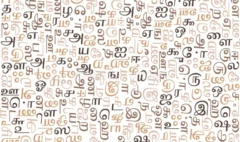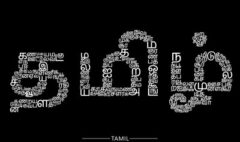Tamil Vocabulary for the Body and Common Ailments
Tamil Vocabulary for the Body and Common Ailments
Tamil Vocabulary for the Body and Common Ailments: An Essential Health Guide
One of the most fundamental and universally important areas of any language’s vocabulary is the one that relates to our own bodies and our health. The ability to name our body parts in Tamil and to describe our physical state is a crucial skill for everyday life. This knowledge becomes even more critical when we are not feeling well. Being able to clearly and accurately describe our symptoms to a family member, a pharmacist, or a doctor is essential for receiving the right care. This is why a good grasp of the vocabulary for common illnesses in Tamil is a non-negotiable part of functional language fluency.
This comprehensive guide is designed to be a vital resource for learners of all levels. We will provide a detailed list of the essential health and sickness vocabulary, from the basic names for the parts of the body to the specific terms for the ailments that can affect them. This is the core of practical medical Tamil, a vocabulary that empowers you to communicate with clarity and confidence about your own well-being and the well-being of your loved ones.
Part 1: The Human Body (மனித உடல் – Maṉita uṭal) – A Head-to-Toe Guide
Let’s start with the foundational vocabulary for the parts of the human body.
The Head and Face (தலை மற்றும் முகம் – Talai maṟṟum mukam):
- Head – தலை (Thalai)
- Hair – முடி (Mudi)
- Face – முகம் (Mugam)
- Forehead – நெற்றி (Netri)
- Eye / Eyes – கண் / கண்கள் (Kan / Kaṇkaḷ)
- Nose – மூக்கு (Mookku)
- Ear / Ears – காது / காதுகள் (Kaathu / Kāthukaḷ)
- Mouth – வாய் (Vaai)
- Lip – உதடு (Uthadu)
- Tooth / Teeth – பல் / பற்கள் (Pal / Paṟkaḷ)
- Tongue – நாக்கு (Naakku)
- Throat – தொண்டை (Thondai)
- Neck – கழுத்து (Kazhutthu)
The Torso and Back (உடல் மற்றும் முதுகு – Udal maṟṟum muthugu):
- Shoulder – தோள் (Thol)
- Chest – மார்பு (Maarbu)
- Stomach / Abdomen – வயிறு (Vayiru)
- Back – முதுகு (Muthugu)
- Waist / Hip – இடுப்பு (Iduppu)
- Heart – இதயம் (Idhayam)
The Limbs (கைகால்கள் – Kaikālkaḷ):
- Arm / Hand – கை (Kai)
- Elbow – முழங்கை (Muzhangai)
- Wrist – மணிக்கட்டு (Manikkattu)
- Finger – விரல் (Viral)
- Leg – கால் (Kaal)
- Thigh – தொடை (Toṭai)
- Knee – முழங்கால் (Muzhangaal)
- Foot – பாதம் (Paatham)
- Ankle – கணுக்கால் (Kanukkaal)
- Toe – கால் விரல் (Kaal viral)
Other Key Parts:
- Skin – தோல் (Tōl)
- Bone – எலும்பு (Elumpu)
- Muscle – தசை (Tacai)
– Blood – இரத்தம் (Irattam)
Part 2: Health and Sickness Vocabulary (ஆரோக்கியம் மற்றும் நோய் – Ārōkkiyam maṟṟum nōy)
Now that we know the parts of the body, let’s learn the crucial words to describe their condition.
General Terms:
- Health – ஆரோக்கியம் (Ārōkkiyam)
- Sickness / Illness / Disease – நோய் (Nōy)
- Pain – வலி (Vali)
- Symptom – அறிகுறி (Aṟikuṟi)
- Medicine – மருந்து (Marunthu)
- Doctor – மருத்துவர் (Marutthuvar)
Common Illnesses and Symptoms in Tamil:
The key sentence structure for expressing a symptom is “எனக்கு … இருக்கிறது” (Eṉakku … irukkiṟatu), which means “I have…”
- Fever – காய்ச்சல் (Kāyccal)
Sentence: “எனக்கு காய்ச்சல் இருக்கிறது.” (Eṉakku kāyccal irukkiṟatu.) – “I have a fever.” - Cold – சளி (Caḷi)
Sentence: “எனக்கு சளி பிடித்திருக்கிறது.” (Eṉakku caḷi piṭittirukkiṟatu.) – “I have caught a cold.” - Cough – இருமல் (Irumal)
- Headache – தலைவலி (Talaivali)
- Stomachache – வயிற்று வலி (Vayiṟṟu vali)
- Body Pain – உடல் வலி (Uṭal vali)
- Sore Throat – தொண்டை வலி (Toṇṭai vali)
- Vomiting – வாந்தி (Vānti)
- Diarrhea – வயிற்றுப்போக்கு (Vayiṟṟuppōkku)
- Dizziness – தலைச்சுற்றல் (Talaiccuṟṟal)
- Tiredness / Fatigue – சோர்வு (Cōrvu)
- Injury – காயம் (Kāyam)
- Wound / Sore – புண் (Puṇ)
- Swelling – வீக்கம் (Vīkkam)
- Itching – அரிப்பு (Arippu)
- Allergy – ஒவ்வாமை (Ovvaamai)
How to Describe Pain More Specifically
Being able to describe the location and nature of your pain is very important in a medical setting.
Describing the Location:
The structure is “[Body Part]-il vali.” The “-il” suffix means “in” or “on.”
- “I have pain in my back.” – “எனக்கு முதுகில் வலி.” (Eṉakku mutukil vali.)
- “I have pain in my leg.” – “எனக்கு காலில் வலி.” (Eṉakku kālil vali.)
Alternatively, you can use the verb “வலிக்கிறது” (valikkiṟatu), which means “it hurts.”
- “My head hurts.” – “என் தலை வலிக்கிறது.” (Eṉ talai valikkiṟatu.)
- “My tooth hurts.” – “என் பல் வலிக்கிறது.” (Eṉ pal valikkiṟatu.)
Describing the Type of Pain:
- Severe Pain – கடுமையான வலி (kaṭumaiyāṉa vali)
- Mild Pain – லேசான வலி (lēcāṉa vali)
- Throbbing Pain – துடிக்கும் வலி (tuṭikkum vali)
- Burning Sensation – எரிச்சல் (ericcal)
Conclusion: The Vocabulary of Well-Being
Mastering the health and sickness vocabulary in Tamil is a fundamental and empowering aspect of the language learning journey. It is a vocabulary that is deeply practical and universally necessary. For parents, teaching the body parts in Tamil to your children is a foundational part of their development. For all learners, knowing the words for common illnesses in Tamil is a crucial tool that allows you to care for yourself and your loved ones and to communicate one of your most basic and important needs with confidence and clarity. This is the essential vocabulary that forms the core of practical medical Tamil.









